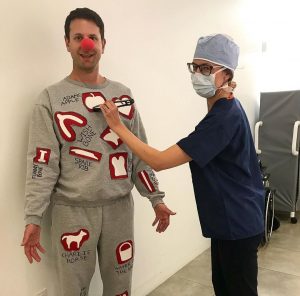Black and blue
February 13, 2023
“Anguish” refers to all things black and blue. Especially in today’s overcompensating world, where the issue of injustice—on any scale—is met with only one of two “solutions:” making noise or staying quiet.
A Black man was killed by 5 other Black men wearing blue. On the front page of the New York Times’ website, a video of the killing looped. It showed “anguish.” Blue lights flashed with a warning of red. Black fists raised, not in protest or cultural solidarity, but in retraction, before smashing down on the crumbling breaths of a dying man, crying out for his mother.
His name was Tyre Nichols, and he was trying to go home.
When learning about instances of police brutality, the first thing people look for, is race— “what was the race of the victim?” and “what race were the cops?” In many cases, the victims are Black, and the perpetrators are white. But in Nichols’ story, both the victim and the perpetrators were Black. Because of this, arguments shifted, and the many that were once loud became silent and had very little to say.
But why was this the reaction? Where was the anger? Where was the rage?
Silenced. People were silenced with either shame or disappointment and felt there was nothing to contribute to the conversation. Nichols’ case deserves conversation, just as much as any other, if not even more. People felt silenced because there wasn’t a distinction between Nichols’ and the officers’ races, but there is still an observation to be made in the behavior and race of the police officers.
Race at times feels like a cloak—like some draped fabric that everyone can see the second you step outside, while you can’t. At least not until someone tells you about it, or someone tries to tug it off or “make it better.” It’s like clothing—you wear an outfit and people look at it to help identify you. It’s like the blue uniform officers wear to distinguish their power and authority from others. Race is similar to all of this, except, race is an outfit/cloak you can’t take off or add layers on top of to cover it up.
People of color beat themselves and others, with learned hatred and disgust, until they are blue. The officers that killed Nichols wore this blue as a race—as an identity—just like many other officers. They must have forgotten that once they remove their blue uniform, they are Black men in America facing discrimination, discrepancy and disaster; functioning in a justice system and overall society where there is little justice and ease for people of certain complexions.
Cases like Nichols’ seem to loop in history, gradually intensifying with every occurrence. The rate at which these instances take place desensitizes people to the point where they are unable to make critical observations and have effective conversation. But just like Christopher Harris, Michael Brown, Tamir Rice, Breonna Taylor, George Floyd, Daunte Wright and many others, Tyre Nichols was killed out of pure hatred for his race.
They beat Nichols just as bruised and battered as the system that showed them that the horrendous treatment of Black people was justified. Blue and Black fighting, tormenting each other; creating anguish until their battlefield is blurred with no victory in sight.
Where is the noise?



